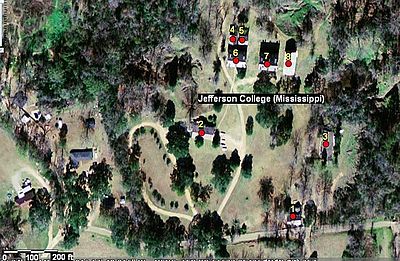
Seton Hall University (SHU) is a private Roman Catholic research university in South Orange, New Jersey. Founded in 1856 by then-Bishop James Roosevelt Bayley and named after his aunt, Saint Elizabeth Ann Seton, Seton Hall is the oldest diocesan university in the United States.

Texas Christian University (TCU) is a private research university in Fort Worth, Texas. It was established in 1873 by brothers Addison and Randolph Clark as the AddRan Male & Female College. It is affiliated with the Christian Church.

The University of Minnesota Morris (UMN–Morris) is a public liberal arts college in Morris, Minnesota. It is part of the University of Minnesota system and was founded in 1960 as a public, co-educational, residential liberal arts college offering Bachelor of Arts degrees.
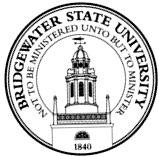
Bridgewater State University is a public university with its main campus in Bridgewater, Massachusetts. It is the largest of nine state universities in Massachusetts. Including its off-campus sites in New Bedford, Attleboro, and Cape Cod, BSU has the fourth-largest campus of the 29 institutions in the Massachusetts Public Higher Education System. BSU's sports teams are called the Bears. Its school colors are crimson, white, and black.

Marycrest College Historic District is located on a bluff overlooking the West End of Davenport, Iowa, United States. The district encompasses the campus of Marycrest College, which was a small, private collegiate institution. The school became Teikyo Marycrest University and finally Marycrest International University after affiliating with a Japanese educational consortium during the 1990s. The school closed in 2002 because of financial shortcomings. The campus has been listed on the Davenport Register of Historic Properties and on the National Register of Historic Places since 2004. At the time of its nomination, the historic district consisted of 13 resources, including six contributing buildings and five non-contributing buildings. Two of the buildings were already individually listed on the National Register.

Bluefield University is a private Baptist university in Bluefield, Virginia. It offers 22 majors and is accredited by the Southern Association of Colleges and Schools. The 82-acre (330,000 m2) campus is about 150 ft (46 m) from the state line between Virginia and West Virginia. It is affiliated with the Baptist General Association of Virginia. Bluefield University merged with Edward Via College of Osteopathic Medicine medical school system located at the campus of Virginia Tech in Blacksburg, Virginia.

The University of Science and Arts of Oklahoma (USAO) is a public liberal arts college in Chickasha, Oklahoma. It is the only public college in Oklahoma with a strictly liberal arts–focused curriculum and is a member of the Council of Public Liberal Arts Colleges. USAO is an undergraduate-only institution and grants bachelor's degrees in a variety of subject areas. The school was founded in 1908 as a school for women and from 1912 to 1965 was known as Oklahoma College for Women. It became coeducational in 1965 and today educates approximately 800 students. In 2001, the entire Oklahoma College for Women campus was listed as a national historic district.

Eleutherian College, founded as Eleutherian Institute in 1848, was a school founded by local anti-slavery Baptists at Lancaster in Jefferson County. The institute's name comes from the Greek word eleutheros, meaning "freedom and equality." The school admitted students without regard to ethnicity or gender, including freed and fugitive slaves. Its first classes began offering secondary school instruction on November 27, 1848. The school was renamed Eleutherian College in 1854, when it began offering college-level coursework. It closed in 1874 and its main building was used for a private normal school and then a public high school. It is now home to a non-profit group. The school was the second college in the United States west of the Allegheny Mountains and the first in Indiana to provide education to students of different colors. The restored three-story stone chapel and classroom building was constructed between 1853 and 1856 and presently serves as a local history museum. The school was listed on the National Register of Historic Places in 1993 and declared a National Historic Landmark in 1997,
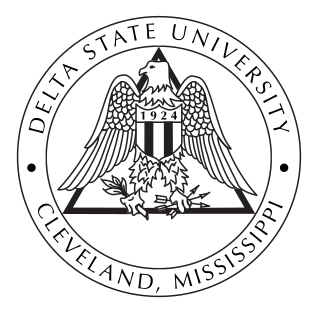
Delta State University (DSU) is a public university in Cleveland, Mississippi, a city in the Mississippi Delta.
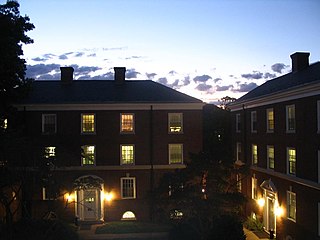
Brown College at Monroe Hill is one of three residential colleges at the University of Virginia. Originally named Monroe Hill College, Brown opened in 1986 as the first modern residential college at the University of Virginia. It was renamed Brown College at Monroe Hill in recognition of the endowment donated by the Brown family in 1994. The college is led by James Coan, Principal, and John T. Casteen IV, Director of Studies. A number faculty fellows from many departments and schools of the university maintain close ties to the college.

The original campus of Centenary College of Louisiana is located along College Street in Jackson, Louisiana. It is operated and preserved as a museum by the Louisiana Office of State Parks as the Centenary State Historic Site, offering educational interpretive programs and guided tours.
The Campus of the University of Southern California, also known as the University Park Campus is located in the Exposition Park neighborhood of Los Angeles, California. The campus sprawls across 226 acres and contains most of the academic facilities and residential buildings of the University of Southern California. The University Park campus is in the University Park district of Los Angeles, 2 miles (3.2 km) southwest of downtown Los Angeles. The campus's boundaries are Jefferson Boulevard on the north and northeast, Figueroa Street on the southeast, Exposition Boulevard on the south, and Vermont Avenue on the west. Since the 1960s, through-campus vehicle traffic has been either severely restricted or entirely prohibited on some thoroughfares. The University Park campus is within walking distance to Los Angeles landmarks such as the Shrine Auditorium and Los Angeles Memorial Coliseum, which is operated and managed by the University. Most buildings are in the Romanesque Revival style, although some dormitories, engineering buildings, and physical sciences labs are of various Modernist styles that sharply contrast with the predominantly red-brick campus. Widney Alumni House, built-in 1880, is the oldest university building in Southern California. In recent years the campus has been renovated to remove the vestiges of old roads and replace them with traditional university quads and gardens. The historic portion of the main campus was listed on the National Register of Historic Places in 2015.
A Mississippi Landmark is a building officially nominated by the Mississippi Department of Archives and History and approved by each county's chancery clerk. The Mississippi Landmark designation is the highest form of recognition bestowed on properties by the state of Mississippi, and designated properties are protected from changes that may alter the property's historic character. Currently there are 890 designated landmarks in the state. Mississippi Landmarks are spread out between eighty-one of Mississippi's eighty-two counties; only Issaquena County has no such landmarks.

McMillan Hall is a building on the campus of Washington & Jefferson College in Washington, Pennsylvania, United States. Built in 1793, it is the only surviving building from Washington Academy. It is the eighth-oldest academic building in the United States that is still in use for its original academic purpose and is the oldest surviving college building west of the Allegheny Mountains.

The Quad is an approximately 22-acre (8.9 ha) quadrangle on the campus of the University of Alabama located in Tuscaloosa, Alabama. Home to most of the university's original buildings, this portion of the campus remains the geographic and historic center of the modern campus. Originally designed by noted English-born architect William Nichols, construction of the university campus began in 1828, following the move of the Alabama state capital from Cahaba to Tuscaloosa in 1826. The overall design for this early version of the campus was patterned after Thomas Jefferson's plan for the University of Virginia, with its Lawn and Rotunda. Following the destruction of the campus during the American Civil War, a new Quad emerged in the late 19th and early 20th centuries. Different in form and function from the original design of the early 19th century, the modern Quad continues to fill its role as the heart of the campus. Although surrounded by academic and administrative buildings, only five structures are built directly on the Quad: the Little Round House, Tuomey Hall, Oliver-Barnard Hall, Amelia Gayle Gorgas Library, and Denny Chimes. The remainder of the space is occupied by a grove of trees on the west side and a great lawn on the east. A feature on the northwestern side, known as The Mound, is the site of the old Franklin Hall. A popular gathering place, the Quad is home to pep rallies, a bonfire during homecoming, and numerous day-to-day student activities.

Mississippi Department of Archives and History (MDAH) is a state agency founded in 1902. It is the official archive of the Mississippi Government.

The History of Louisiana Tech University began when the Industrial Institute and College of Louisiana was founded in Ruston, Louisiana in 1894. The institute was founded to develop an industrial economy in the state of Louisiana. Four years later, the school was renamed the Louisiana Industrial Institute when Louisiana adopted the Constitution of 1898. When the Constitution of 1921 was passed, the school changed its name again to Louisiana Polytechnic Institute to reflect the school's evolution from a trade school into a larger and broader technical institute. Although the university was informally called Louisiana Tech for about five decades after the 1921 name change, it was not until 1970 when Louisiana Polytechnic Institute officially changed its name to Louisiana Tech University. Over the course of its history, the school grew from a small industrial institute with one building to a university with five colleges and an enrollment of around 11,800 students.

Eureka School, located at 412 East 6th Street in Hattiesburg, Mississippi, was constructed in 1921 as a public school for African Americans. The school was the first brick school building for black students to be built in Mississippi. The former school building, which now houses a civil rights museum, was designated a Mississippi Landmark in 2005.
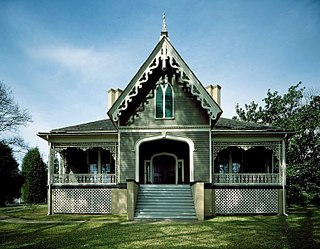
The Manship House is a historic residence in Jackson, Mississippi. It was added to the National Register of Historic Places in 1972, and was designated a Mississippi Landmark in 1986.



